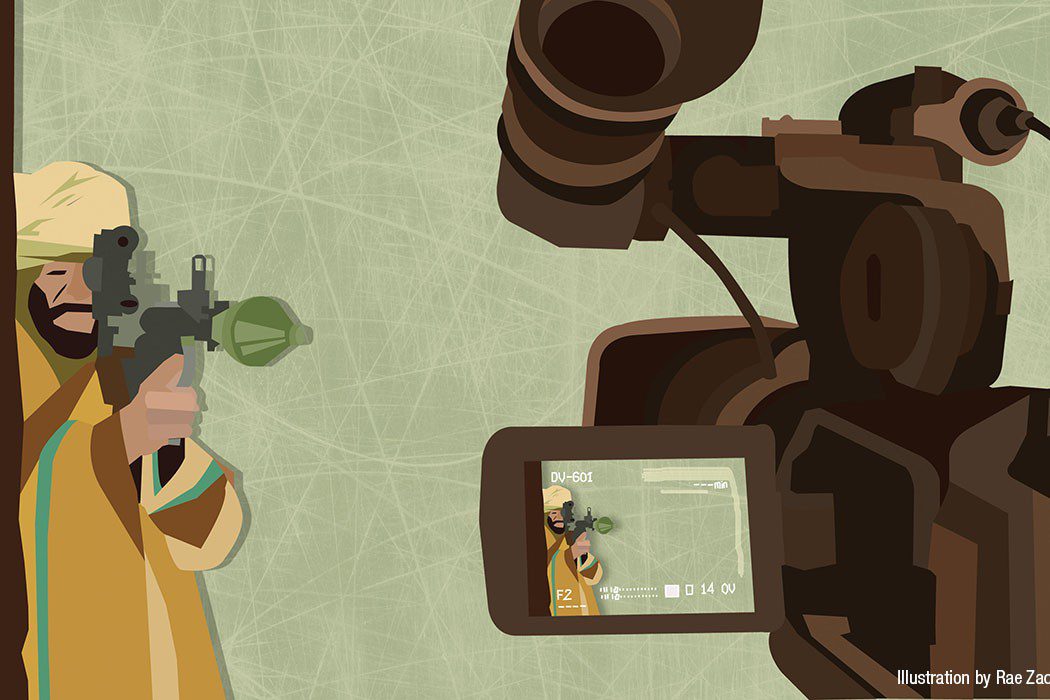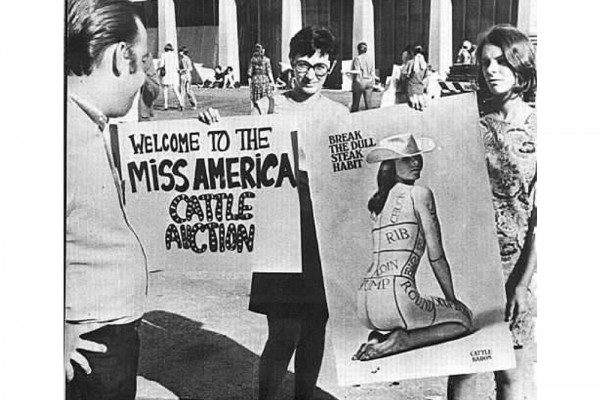Three films about by Indians about Pakistan. (1) Nuanced, amusing… but ultimately self serving. (2) Earnest, well-intentioned, but ultimately banal. (3) Deliberately trivialising, over-the-top, but ultimately satisfying. By Thomas Crowley.
The recent events in Pakistan – most dramatically, the Karachi airport attack and the government’s subsequent decision to launch a massive offensive against militant groups – have given an unexpected salience to the movie Filmistaan, which made its way around the festival circuit in 2012, but only got a national release on June 6th of this year. The movie follows a hapless aspiring Bollywood actor as he assists an American film crew working in Rajasthan, near the India-Pakistan border, only to get kidnapped by Pakistani militants.
Most of the film takes place in the small Pakistani village where the militants deposit our hero, Sunny (a good description of both his demeanour and the sweltering desert setting). Though the film is firmly focused on Sunny, it also gives ample screen time to a pair of militants tasked with guarding their garrulous prisoner. Though they are, undoubtedly, the bad guys, the militants are portrayed with some nuance, and even empathy. Perhaps, in light of current political developments, Filmistaan has something to say about the mindset of militants and the larger conditions that have aided their rise.
This, at least, was my thought when I sat down to watch the movie – a bootlegged version, I might add, of the old-school camcorder piracy type, complete with audience laughter and the shadows of latecomers shuffling to their seats. This was quite appropriate, as Sunny’s main friend and ally in the Pakistani village is a man named Aftaab, who makes a living selling pirated Bollywood films. And just as Aftaab’s films have their share of technical difficulties, so did my copy of Filmistaan. But eventually, the picture came into focus, the tilt of the screen righted itself, and I readied myself to enter the mind of the militant.
As the plot developed, and the film sped towards its denouement, I realised that my expectations had been misplaced. This was hardly the fault of the film; I simply hadn’t realised, initially, that the emphasis of Filmistaan is on the ‘film’ part, not on the ‘staan’ part. In other words, the movie is, at its heart, a love song to the Indian film industry, and especially to Bollywood. The film is devoted, not to the ins and outs of Pakistani militarism and its discontents, but to the notion – at first presented tongue-in-cheek, and then imbued with increasing sentimentality – that Bollywood can help even the most hardened enemies put aside their differences. No wonder the movie won the National Film Award for Best Feature Film in Hindi in 2012. Just as philosophers since Plato have said that philosophers should be ruling the world, the film industry loves telling itself that it can solve the world’s problems.
This is not to discount the outstanding performances from the lead actors in Filmistaan, nor its genuine emotional core, based on the playful, heartfelt connection between the two film-buff friends (even if that core is then wrapped up in several layers of willful naivety). But Filmistaan was not the film I was looking for. Perhaps, then, I could find something more politically relevant in another film that got its start on the 2012 festival circuit: Mira Nair’s The Reluctant Fundamentalist. This film, based on the novel by Mohsin Hamid, also addresses the issue of militants in Pakistan, but here the issue is brought front and center, instead of at the fringes, where they remain in Filmistaan. The Reluctant Fundamentalist tells the story of a young man from Pakistan’s cultural elite, who successfully chases the American dream and gets a lucrative job in business consulting, but – after experiencing the xenophobia and anti-Muslim hysteria of post-9/11 America – becomes increasingly critical of American hegemony, and, in the end, becomes the reluctant fundamentalist of the film’s title.
At least, that’s what I had initially thought (I clearly have a bad track record with these things). But, in one of the movie’s portentous plot turns, it is revealed (spoiler alert) that the film’s protagonist is not, in fact, a fundamentalist at all; instead, he equally rejects America’s free-market fundamentalism, and Pakistan’s Islamic fundamentalism. He is, one could say, non-aligned.
This is fine, but his story is told with an utter lack of nuance, hitting its viewers over the head with its well-intentioned, but obvious messages: the finance sector succeeds at the expense of labour; America is running an empire that is not very concerned with the well-being of Pakistanis; Americans often harbour anti-Muslim prejudices. The clunky dialogue doesn’t help; lines like “The answer to that question may challenge some of your preconceived notions” are far too common.
Watching the film motivated me to go back to the book, which I had read soon after its publication in 2007; I remember thinking it was well told, but not terribly revelatory. The movie, though, made the book seem immeasurably better in retrospect, a reevaluation confirmed by my second reading of the book. Everything that the movie screamed at the top of its lungs, the book mouthed in a suggestive, playful, ambiguous whisper. The movie is replete with whiz-bang action sequences and scenes of explicit violence, but the book – which takes the form of a masterful dramatic monologue – keeps the violence under the surface, palpable throughout but undefined, and all the more menacing for that.
So I had rediscovered and reassessed a well-crafted book, but my search for a definitive Indian film on militarism across the border had come to naught. If nuance and socio-political explanation could not be found on screen, perhaps the best available option was broad satire. After all, the best parts of Filmistaan were the comedic bits (as when the hero eagerly assists the militants in making their hostage video), and one of the flaws of The Reluctant Fundamentalist (the movie, not the book) was its absolute lack of any sense of humour.
And I did find some filmic satisfaction, finally, from a movie that has become a cult classic: the 2010 satire Tere Bin Laden, which follows an America-obsessed Pakistani journalist who, desperate to raise money to get a fake passport, makes a fake Osama Bin Laden video and sells it to a news channel. This film doesn’t even attempt to get into the minds of the militant – all its militants are fakes, created with the judicious use of make-up and props. And the film’s tone can be just as heavy-handed as Nair’s, but one gets the sense that this is intentional. The movie is trying to be over-the-top – witness the American general’s ridiculously over-Americanised accent – and succeeding brilliantly.
In the midst of all its bombast, the film also makes some rather clever points. There is, for instance, the speech of that same American general, in which he urges all the soldiers to bring cameras with wide-angled lenses, to capture every moment of a military attack that is, in reality, just a distraction from the main American strategy. It’s a good reminder of how media-saturated and media-dependent the ‘War on Terror’ has been; in fact, the fake Osama video is only a slightly exaggerated, caricatured version of the media tricks that have suffused modern-day politics and warfare. This is film-as-con-game, a far cry from the film-as-saviour motif of Filmistaan. Tere Bin Laden may not help us understand the motivations and socio-political realities of Pakistani militants, but at least it reminds viewers to be wary as the next deluge of media reports on Pakistan comes rolling in.


